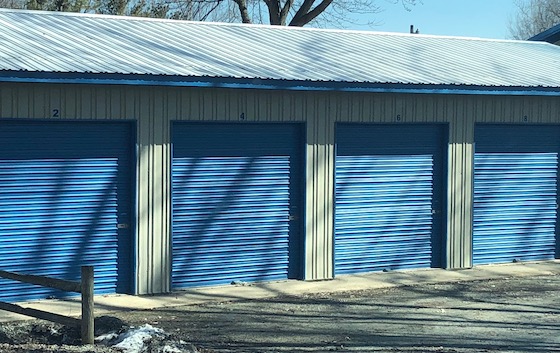Have you ever played the “claw machine”? This standard amusement, that is found at every Walmart and arcade, is based on a trick. They deliberately position all the stuffed animals so that their foot or tail is stuck under the one beneath, so it’s impossible to pull them out of the pile (at least most of the time). While the claw machine may cost you a couple dollars when you fail, a self-storage facility can cost you hundreds of thousands of dollars if you get tricked. So how do you guard against the common tricks that sellers play?
Make sure there is a lock on every unit that is claimed to be occupied
While any smart buyer reviews all of the leases for every unit that is said to be occupied, you should also visually inspect each door to make sure that there is a lock on it. If there’s no lock on it, open it up and see what’s inside (it’s probably empty). While a truly corrupt seller can simply forge a lease and put a lock on a vacant unit, most sellers are not going to want to take their scheme to that level, which could potentially land them in big legal trouble. And even if the unit is vacant that is supposed to be occupied, that is easily remedied after closing with your marketing program, as long as there are not too many of them.
Look for “below the line” items
Some sellers try to sneak big dollar items at their self-storage facility to “below the line” which means that they are not shown on the typical profit and loss statement, but instead as a capital expense on the actual financial statement and/or tax return. Read the financials for the property from end to end, and don’t let the seller give you a short form analysis or some vague B.S. when numbers don’t add up. Any decent accountant can review these with you and spot the “below the line” activity that you need to be aware of.
Get all third-party reports – and don’t accept those provided by seller
Third party reports are designed to protect you and your investment. So you can’t accept these reports (Phase I Environmental, survey, title work, property condition, etc.) from the seller because they may have altered them or paid the provider to cheat. We know of one case in which a fraudulent seller took some white-out and erased the fact the property was in a floodplain. The buyer trusted the seller and never questioned the survey. Years later the property flooded and the deceit was revealed. The good news was that the seller had many assets and was forced to return the purchase price to the buyer. All third-party reports must come from those hired by you, the buyer, and never the seller. Too dangerous.
Build in some “fluff” for the unknown
With the full knowledge that there are lecherous sellers out there, it’s imperative to build a little “fluff” in your numbers as a security blanket and buffer. Don’t allow yourself to cut the numbers too tight and box yourself into a corner. Give yourself some leeway for a rainy day, so that you can withstand minor cheats by the seller.
Don’t get in the seller carry “trap”
One of the worst – and most ingenious – self-storage seller traps is to carry the paper on the deal on a short-term basis with the full knowledge that you will not be able to get it refinanced and will then lose the property back to the seller. They gain your down payment then (roughly 20% to 30% of sales price) and can then re-sell it again. There are rumors of sellers who have accomplished this trick on the same property several times. The solution is to 1) make sure that any property you buy and in which the seller carries the paper must be vetted to be possible to obtain bank lending and 2) seller note lengths must be long enough to allow you to hit target numbers and season them for a while before bank debt is approached, as well as to obtain bank debt.
Conclusion
A “claw machine” may provide fun amusement, but buying a self-storage property should never be subject to seller cheating. These tips will keep you out of trouble, coupled with outstanding due diligence. Benjamin Franklin once said that “diligence is the mother of good luck” and he was 100% correct.




